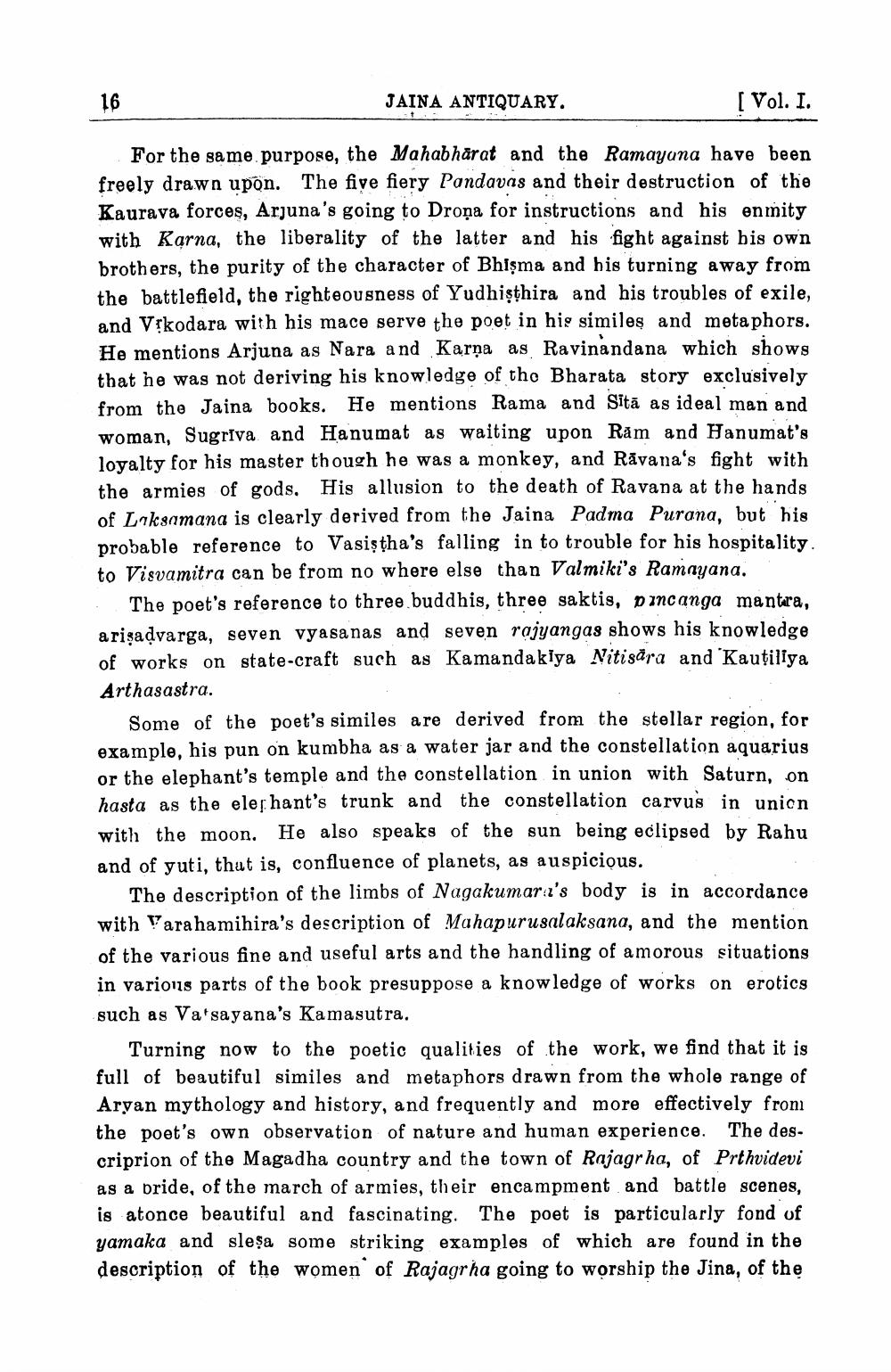________________
16
JAINA ANTIQUARY.
[ Vol. I.
For the same purpose, the Mahabharat and the Ramayana have been freely drawn upon. The five fiery Pandavas and their destruction of the Kaurava forces, Arjuna's going to Drona for instructions and his enmity with Karna, the liberality of the latter and his fight against his own brothers, the purity of the character of Bhisma and his turning away from the battlefield, the righteousness of Yudhisthira and his troubles of exile, and Vrkodara with his mace serve the poet in his similes and metaphors. He mentions Arjuna as Nara and Karna as Ravinandana which shows that he was not deriving his knowledge of the Bharata story exclusively from the Jaina books. He mentions Rama and Sita as ideal man and woman, Sugriva and Hanumat as waiting upon Ram and Hanumat's loyalty for his master though he was a monkey, and Ravana's fight with the armies of gods. His allusion to the death of Ravana at the hands of Laksamana is clearly derived from the Jaina Padma Purana, but his probable reference to Vasistha's falling in to trouble for his hospitality. to Visvamitra can be from no where else than Valmiki's Ramayana.
The poet's reference to three buddhis, three saktis, pincanga mantra, arisaḍvarga, seven vyasanas and seven rajyangas shows his knowledge of works on state-craft such as Kamanda kiya Nitisära and Kautilya Arthasastra.
Some of the poet's similes are derived from the stellar region, for example, his pun on kumbha as a water jar and the constellation aquarius or the elephant's temple and the constellation in union with Saturn, on hasta as the elephant's trunk and the constellation carvus in union with the moon. He also speaks of the sun being eclipsed by Rahu and of yuti, that is, confluence of planets, as auspicious.
The description of the limbs of Nagakumara's body is in accordance with arahamihira's description of Mahapurusalaksana, and the mention of the various fine and useful arts and the handling of amorous situations in various parts of the book presuppose a knowledge of works on erotics such as Va'sayana's Kamasutra.
Turning now to the poetic qualities of the work, we find that it is full of beautiful similes and metaphors drawn from the whole range of Aryan mythology and history, and frequently and more effectively from the poet's own observation of nature and human experience. The descriprion of the Magadha country and the town of Rajagrha, of Prthvidevi as a bride, of the march of armies, their encampment and battle scenes, is atonce beautiful and fascinating. The poet is particularly fond of yamaka and sleșa some striking examples of which are found in the description of the women of Rajagrha going to worship the Jina, of the




